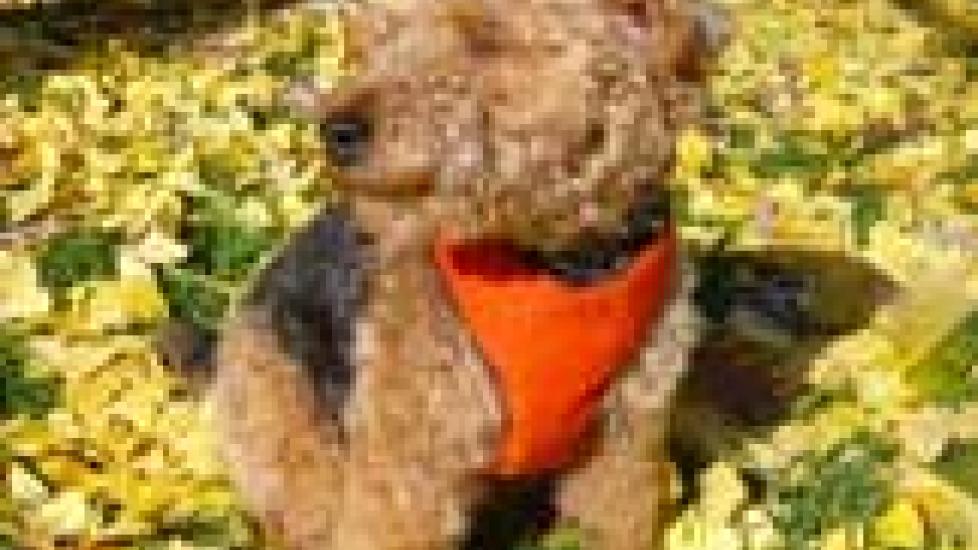Seasonal Pet Health Hazards Associated with Fall
Fall is one of my favorite seasons. I fondly recall the sensations associated with brisk autumn temperatures, the aromas of drying plants, and the variety of colors bursting from withering leaves, all of which I experienced while living on the East Coast. Now that Southern California is my home, fall’s climate and vegetation changes are more subtle, yet still highly regarded.
Although many of the seasonal changes associated with fall have great appeal for people, they also present many potential health hazards for our pets, about which owners must be aware.
Dangers Due to Decreased Hours of Daylight
Most peoples’ lives are so busy that we wish there was an extra hour in each day to manage our responsibilities. Therefore, losing an hour of day light when our clocks fall back in observance of Daylight Savings Time’s completion can be frustrating.
Fewer hours of daylight and evening’s earlier start means that we are partaking in many of our daily activities when visibility is poor. Dog owners end up walking or exercising their canine companions in the darkness of early morning or evening.
Reduced light makes it more challenging for drivers to see animals (and people) in driveways, sidewalks, and roads. Having worked in emergency veterinary practice for many years, I've observed an increase in the trend of both dogs and cats suffering injuries after being hit by a car during daybreak or twilight hours.
If you walk your pooch or permit your feline companion to venture outdoors, maintain close observation and control by using a leash and collar or chest harness. Have your pets wear up-to-date tags and implant a microchip to improve their likelihood of a safe return should they go missing.
Dangers Due to Leaves
The pleasure associated with observing the colors of fall quickly dissipates upon embarking on the laborious job of cleaning up a seemingly endless supply of leaves.
The startling noises created by leaf blowers may drive your pets into seclusion or cause them to flee your property. Additionally, gas powered devices can leak fuel or oil, which creates a source of toxicity should ingestion occur when your pet licks a substance from the ground or their paws.
Leaf piles remaining on your lawn quickly accumulate moisture, which promotes bacterial and mold growth. If your pet ingests these microorganisms, digestive tract upset (vomit, diarrhea, decreased appetite, etc.) could ensue.
Dried leaves and other plant material may be burned as part of fall’s clean up, thereby releasing smoke and plant based oils (poison ivy, etc.) that can irritate your pet’s eyes, nose, throat, lungs, and skin.
The safest practice is to keep your pets confined indoors, separate from your yard work.
Dangers Due to Plants and Mushrooms
The Chrysanthemum (mum) is a seasonally blooming flower that is commonly associated with fall. Toxicity can occur if your dog or cat ingests the mum's flower, stems, or leaves, all of which can cause the following clinical signs:
- Ataxia (stumbling)
- Dermatitis (skin inflammation)
- Ptyalism (increased salivation)
- Vomit
- Diarrhea
Other plants producing blooms with a toxic potential for dogs and cats include:
Mushrooms can also appear in our yard or other nitrogen rich material (mulch, etc.). Fortunately for our companion animals, most wild-growing mushrooms are non-toxic. Differentiating a toxic from a non-toxic mushroom is quite challenging, so it’s best to prevent their consumption by your pet. The Amanita phalloides (death cap) causes severe liver toxicity if ingested.
Dangers Due to Rodenticides
Fall’s cooler temperatures drive rodents in search of shelter from the cold and into our homes. Rodenticides (poisons which kill mice, rats, and other creatures) can help deter vermin infestations, but rodenticide ingestion also causes life threatening toxicity to both dogs and cats. Brodifacoum, the active ingredient in D-Con and a common rodenticide, is an anti-coagulant that inhibits Vitamin K’s normal function in the blood clotting cascade. Within one to seven days post-ingestion, blood fails to properly clot and the following clinical signs occur:
- Lethargy
- Decreased appetite
- Pale mucous membranes (gums)
- Increased respiratory rate and effort
- Bruising
- Bloody feces
- Black, tar-like stools (from digested blood)
Other varieties of mice and rat poisons can contain Cholecalciferol (Vitamin D3), which causes kidney and liver failure, muscle weakness, seizures, and death.
As mice and rats can transport chunks of rodenticide from a container to a location that is accessible to other animals, it’s best to hire a professional service to address your rodent problem instead of putting down easily accessible commercial poisons.
With suspected or known toxicities, immediately contact your veterinarian or emergency veterinary hospital. Additional resources include the ASPCA’s Poison Control Center (888-426-4435) or Pet Poison Helpline (855-213-6680).
Has your pet experienced any fall associated injuries or illnesses? Hopefully not. But if you do have experience with fall hazards and your pet, please share your story in the comments section.

Dr. Patrick Mahaney
Image: Cardiff in the fall leaves, by Dr. Mahaney
